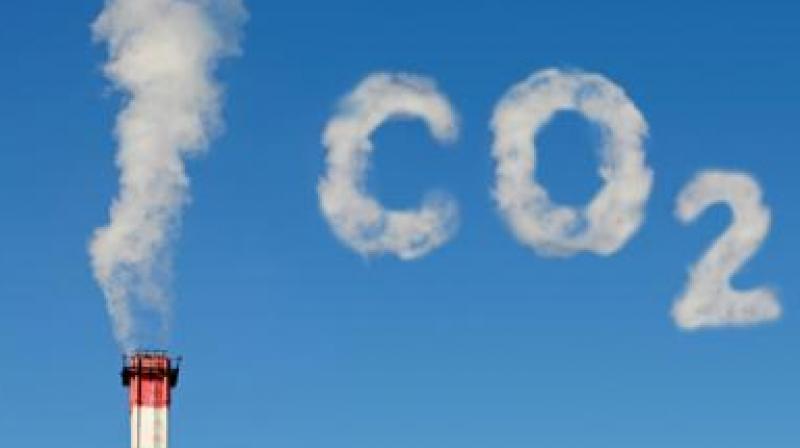Ecoistic: Greenhouse gas blues fighting the emission war

Earth's climate is driven by a continuous flow of energy from the sun. Energy in the form of heat, from the sun, passes through the Earth's atmosphere and warms the Earth's surface. As the temperature increases, the Earth sends heat energy (infrared radiation) back into the atmosphere. Some of this heat is absorbed by gases in the atmosphere, such as carbon dioxide (CO2), water vapour, methane, nitrous oxide, ozone and halocarbons.
CO2 is the most significant of the gases in our atmosphere which keep the Earth warm. 4 billion years ago its concentration in the atmosphere was much higher than today - 80% compared to today's 0.03%. But most of it was removed through photosynthesis over time. All this carbon dioxide became locked in organisms and then minerals such as oil, coal and petroleum inside the Earth's crust. A natural CO2 - cycle keeps the amount of CO2 in our atmosphere in balance. Natural phenomena release natural CO2 into atmosphere, where it stays for about 100 years. It is removed again from the atmosphere by photosynthesis in plants and by dissolution in water (in the oceans). The amount of naturally produced CO2 is almost perfectly balanced by the amount naturally removed. But even small changes caused by human activities can have a significant impact on this balance.
The impacts of global warming: It's nearly impossible to overstate the threat of climate change. Greenhouse gas emissions are rising more rapidly than predicted and consequently the world is warming much faster than expected. Global warming will have catastrophic effects such as accelerating sea level rise, droughts, floods, storms and heat waves. These will impact some of the world's poorest and most vulnerable people, disrupting food production, and threatening vitally important species, habitats and ecosystems. Even if countries fulfill all current mitigation pledges, the world will still face between 2.6º to 4ºC of warming. As we work to reduce emissions, we must simultaneously begin to adapt to the increasing impacts of climate change. Few are suggested below:
- Promoting energy efficiency - the most rapid and cost-effective way to reduce CO2 emissions
- Promoting renewable energy sources - like wind, solar, geothermal power, etc.,
- Preventing greenhouse gas emissions from deforestation -responsible for 25% of all emissions
- Preventing Carbon emissions from automobile - responsible for almost 20% of all emissions
- Developing and promoting climate change adaptation strategies- to safeguard the most vulnerable people and the most exposed ecosystems.
- Data from the World Resources Institute (WRI) show that humans have added 2.3 trillion tonnes of CO2 to the atmosphere in the last 200 years. Half of this amount was added in the last 30 years.
Overall, the concentration of CO2 in the atmosphere has increased by 40% since 1750s, i.e. since the Industrial Revolution. CO2 emissions are now around 12 times higher than in 1900 as the world burns more and more coal, oil and gas for energy. We simply cannot continue pumping CO2 into the atmosphere without curbs and controls. The world is warming faster than at any time in the last 12,000 years. The 1990s was the hottest decade in the past millennium.
Bangalore, currently, with nearly 65 lakh vehicles and more than a thousand industries spewing all sorts of greenhouse gases is racing towards becoming Asia's most polluted city. And if this trend continues, we will need to leave the city in the next 5 to 7 years. Cases of respiratory disorders, asthma, lung infections, etc., is on the rise every day. The saucer-shaped landscape & topography of Bangalore does not easily allow the greenhouse gases to escape and hence get trapped which is ultimately inhaled by Bangaloreans. This is a major worry & concern if we need to save Bangalore and its population from experiencing a major catastrophe very soon. The carrying capacity of the city is lost and the government needs to re-look at the entire development framework now just for Bangalore, but for the entire state. Regional balance needs to be the focus if we need to sustain urban centres in future.
Tier-2 & Tier-3 cities should be the focus of all future development programmes in the state with Bangalore as a focal-hub for various activities and projects across the state.

